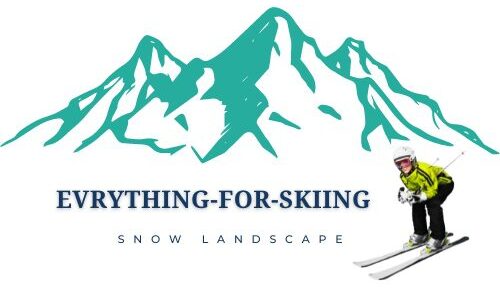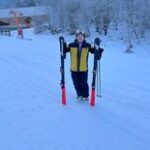Freeride skis are specifically designed for skiing in natural, ungroomed terrains, taking us beyond the boundaries of marked trails into the exciting world of off-piste skiing. These skis are wider, longer, and heavier than traditional skis, which provides better floatation in deep snow, stability in challenging conditions like powder or crud, and excellent performance on rugged terrains. Whether you’re navigating steep slopes, tackling powder, or landing big jumps, freeride skis deliver the durability and control needed for adventurous skiers who thrive on untouched mountain landscapes.
History of Freeride Skiing
French Origins
The roots of freeride skiing can be traced back to the 1930s and 1940s in France, where pioneers like Émile Allais pushed the limits of skiing by attempting daring descents on challenging peaks near Chamonix. These pioneers laid the foundation for the freeride movement, inspiring a generation of skiers to think beyond groomed slopes.
However, the freeride skiing revolution truly began in the 1960s, with innovations in ski technology and equipment. The development of stronger, lighter materials and improved ski designs made it possible for skiers to explore steeper, more extreme terrains. This evolution allowed freeride skiing to grow from a niche pursuit into a globally recognized sport.
Characteristics of Freeride Skis
Freeride skis are designed for off-piste and backcountry skiing; they have essential features to optimize performance on diverse terrains. With a waist width of 95 to 140 millimeters, these skis excel in flotation, providing stability in deep powder and softer snow conditions. Their rocker-camber-rocker profile, with rockers at the tip and tail and camber underfoot, improves maneuverability and edge grip. This combination lets us control their movements across various snow surfaces, making navigating soft and hard-packed snow easier.
The length of freeride skis often exceeds 180 centimeters, offering increased stability at higher speeds and supporting larger, sweeping turns. Their sidecut radius, typically 18 to 30 meters, ensures stability during big turns, especially on steep or uneven slopes. Additionally, the tip and tail rocker design aids in flotation and turning, making it easier to maintain control in powder and challenging conditions. These features collectively make freeride skis ideal for those who thrive on exploring untouched terrains and mastering varied snow conditions.
What Is the Material and Construction of Freeride Skis?
Freeride skis are constructed from wood, composites, and metal to optimize durability, weight, and flexibility.
- Core Materials: Poplar, ash, and paulownia provide a balance of responsiveness, strength, and lightweight flexibility.
- Metal Layers: Titanal layers (10–20%) enhance strength and torsional rigidity.
- Composites: Up to 30% carbon fiber reduces weight and increases responsiveness.
Freeride skis weigh 3.5–5.5 kg per pair, offering stability and performance in off-piste conditions.
- Edge Thickness: Ranges from 2–2.5 mm for impact resistance.
- Base: Sintered P-Tex ensures durability, wax absorption, and smooth glide.
Sandwich construction, which layers materials, enhances performance and durability, making freeride skis ideal for rugged terrains.
How Do Freeride Skis Perform?
Freeride skis excel in various terrains, particularly soft and fresh snow, ensuring fast skiing, smooth landings, and control in challenging conditions.
- Performance Types:
- Smooth-running: Ideal for long descents with speed and stability.
- Agile models: Perfect for tricks and diverse terrains.
- Lighter models: Suitable for touring and easier climbing.
- Heavier models: Provide better edge grip on steep slopes.
Flexibility and Edge Control:
- Flex ratings range from 6–9 for responsiveness and control.
- Edges have a 88–89° angle for precise grip and navigation in variable snow.
Vibration Dampening: Layers of rubber or urethane reduce vibrations for smoother control and comfort.
Turn Radius: Engineered for long, sweeping turns, enhancing flow and stability.
Base Patterns:
- Structured base designs (e.g., crosshatch) improve speed and control in powder and mixed conditions.
Design and Sustainability Features
Freeride skis focus on performance, versatility, and eco-friendly design:
- Powder Features: Spoon or blunt tips improve flotation; flat tails provide stability.
- Twin-tip Design: Enhances maneuverability and allows skiing backward.
- Binding Mount: Positioned 2–3 cm behind the center for better deep-snow flotation.
- Sustainability:
- Up to 50% recycled materials.
- Use of renewable energy and non-toxic inks.
- Durability: UV-protected graphics and water-repellent tops prevent snow buildup and maintain performance.
Some models are also compatible with climbing skins, enabling effortless backcountry access.
Detailed Comparison of Freeride, All-Mountain, Freestyle, and Backcountry Skis
Below is a detailed comparison of freeride skis with all-mountain, freestyle, and backcountry skis, covering various performance attributes, design features, and intended use.
Comparison of Ski Types
| Feauters | Freeride Skis | All-Mountain Skis | Freestyle Skis | Backcountry Skis |
|---|---|---|---|---|
| Waist Width | 95-140 mm | 85-100 mm | 85-100 mm | 85-110 mm |
| Rocker Profile | Rocker-Camber-Rocker | Rocker-Camber-Rocker or Flat-Camber | Twin Rocker or Full Camber | Rocker-Camber-Rocker |
| Flex | Medium to Stiff | Medium | Soft to Medium | Medium |
| Length | 180+ cm | 160-180 cm | 150-170 cm | 160-180 cm |
| Turn Radius | 18-30 meters | 15-20 meters | 10-15 meters | 15-25 meters |
| Tip Shape | Spoon or Blunt Tip | Moderate Taper | Symmetrical Tip and Tail | Slightly Tapered or Blunt |
| Tail Shape | Flat or Slightly Raised | Flat or Slightly Raised | Twin Tip | Flat or Slightly Raised |
| Twin Tip Design | Sometimes | Rarely | Always | Rarely |
| Torsional Rigidity | High for edge holds | Moderate | Low to Moderate | High for stability |
| Vibration Dampening | Rubber or Urethane Layers | Minimal | Minimal | Rubber or Urethane Layers |
| Weight | Heavier for stability in varied terrain | Moderate | Lightweight for agility | Lightweight for uphill efficiency |
| Intended Terrain | Off-Piste, Backcountry | Groomed and Ungroomed Terrain | Parks, Pipes, and Groomed Runs | Off-Piste, Touring, and Backcountry |
Comparison Analysis with All-Mountain, Freestyle, and Backcountry Skis
Freeride vs. All-Mountain Skis
- Freeride skis are wider (95–140 mm waist) and longer (180+ cm), offering better flotation in powder and stability at high speeds.
- Profile: Both have rocker-camber-rocker, but freeride skis prioritize powder performance, while all-mountain skis focus on mixed terrain.
- All-Mountain skis are narrower (85–100 mm) and shorter (160–180 cm), providing versatility for groomed and ungroomed terrain.
- Turn Radius: Freeride skis (18–30 m) excel in long turns; all-mountain skis (15–20 m) favor short, quick turns.
Freeride vs. Freestyle Skis
Freestyle skis are shorter (150–170 cm), softer, and designed for park tricks with a twin-tip design.
- Freeride skis are longer, stiffer, and tailored for off-piste performance and stability in varied snow conditions.
- Waist Width: Freestyle skis (85–100 mm) optimize agility, while freeride skis (95–140 mm) ensure flotation in powder.
- Twin-tip designs are essential in freestyle skis but optional in freeride models.
Freeride vs. Backcountry Skis
- Backcountry skis are lightweight for efficient uphill travel, with narrower waists (85–110 mm) and a shorter turn radius (15–25 m).
- Both feature rocker-camber-rocker profiles, but backcountry skis prioritize uphill maneuverability.
- Freeride skis are heavier, emphasizing downhill stability and performance, with a wider waist and larger turn radius (18–30 m).
Conclusion
Freeride skis are the perfect choice for those who seek adventure beyond the groomed trails. Their broader and heavier design provides excellent stability and floatation, making them ideal for deep snow and varied conditions. Freeride skis are built to handle rugged terrain and big air landings, offering reliability and excitement. For those who love the freedom of exploring untouched mountain landscapes, freeride skis ensure a thrilling and dependable skiing experience.

